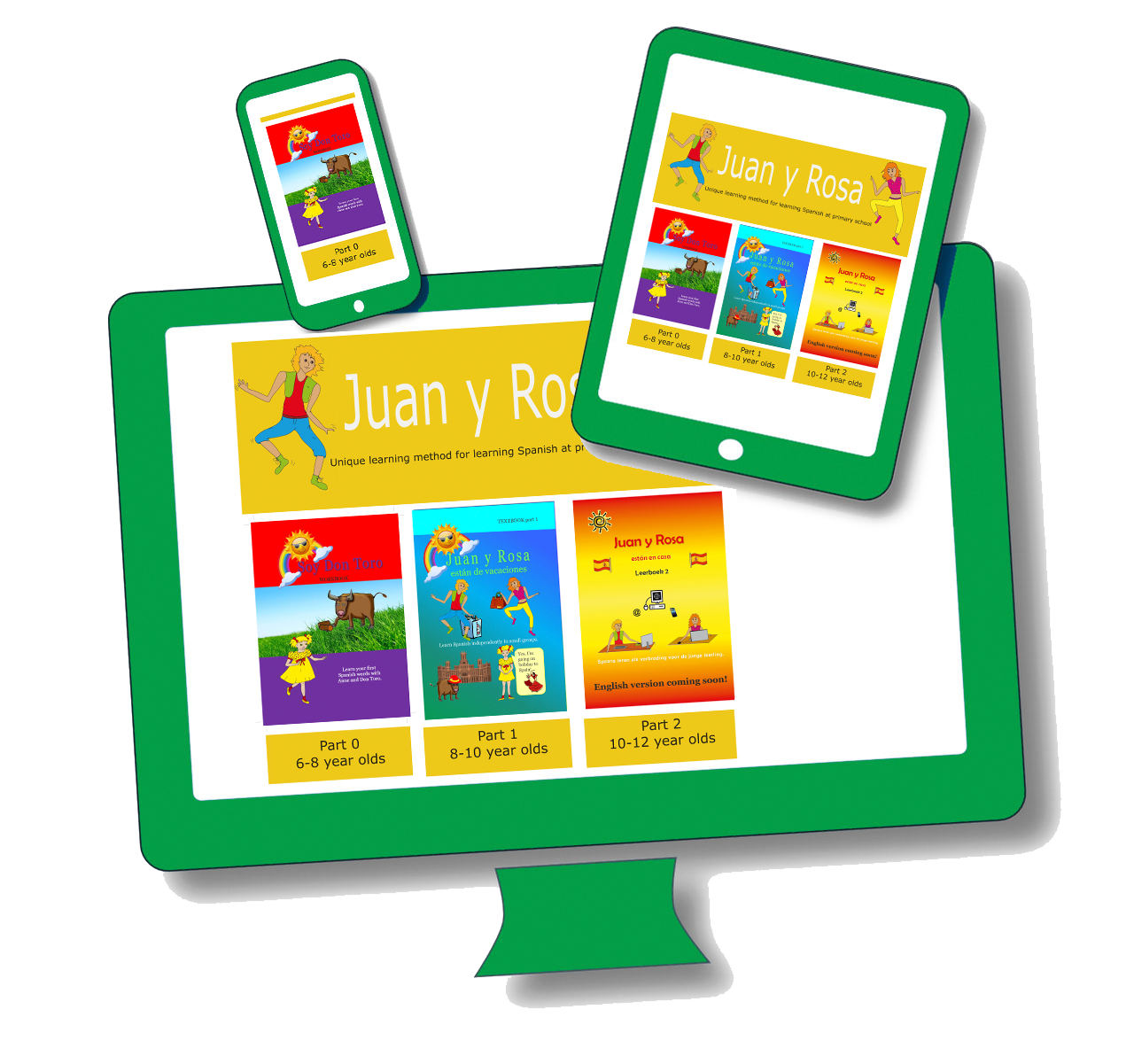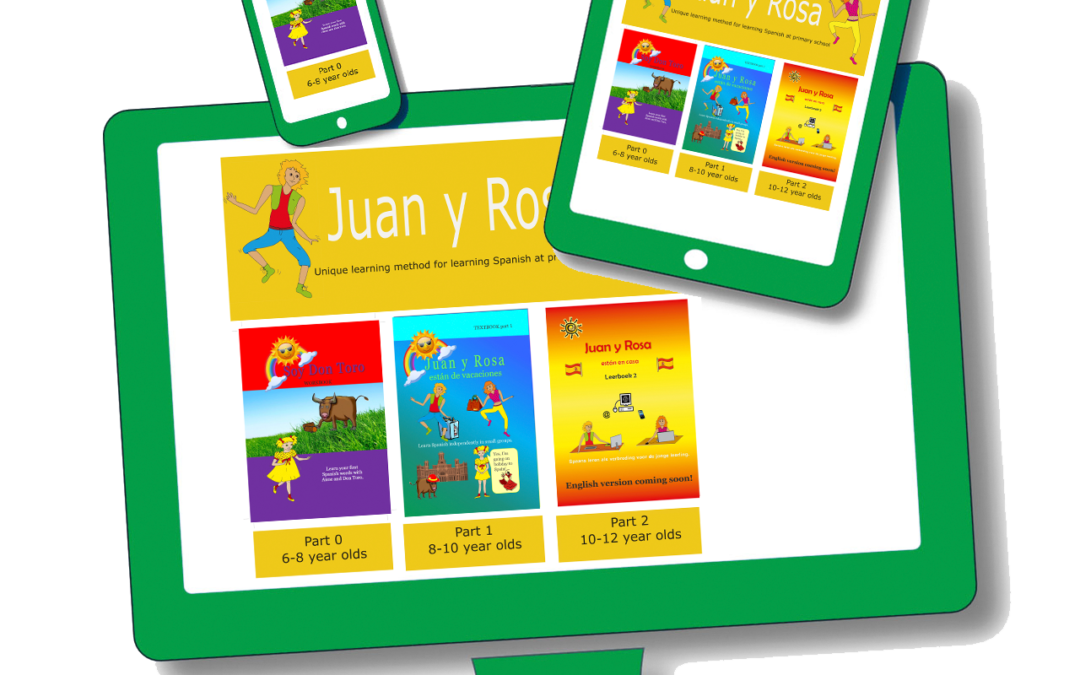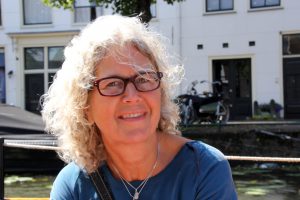The Juan y Rosa learning method will be digitised, but at most only partially because I believe that Juan y Rosa is not suitable for complete digitisation. After all, Juan y Rosa is not a standard method for learning Spanish. The pupils choose their own learning route at their own speed and level. They are challenged to take responsibility for their own learning. That is what the learning method is mainly about, and Spanish is the by-product of that. At primary school, gifted pupils do not automatically discover that learning is a useful activity, although primary school is the place where most children creatively explore different learning strategies and discover what works for them.
When learning a foreign language at primary school, or any other material that requires a long-term span of attention, you need to use all kinds of tools to master the new subject. The Juan y Rosa learning method has been especially developed for this purpose. In contrast to learning your native language, which is action-driven, when learning a foreign language I believe that writing the language should remain one of the ways of learning it. Knowing how to write a word helps pupils to pronounce it and to connect it to other words from their own language, or to connect it to a picture. It gives pupils an extra opportunity – an extra tool – to learn the new language. They need to explore all kind of tools for learning difficult subjects so that they can later choose the best tools for them. The activity of writing also improves cognitive learning, and physically stamping or jumping around while reciting conjugated verbs can be another effective tool for language learning.

If you keep all the options open for pupils when learning something new – stamping, jumping, singing, reading, listening, speaking and writing – they have the greatest chance of discovering their own successful learning strategies. Therefore, I expect the Juan y Rosa learning method to be digitised for around 30% at most.
Have you ever heard of the Waldorf School in the USA’s Silicon Valley?
Schools nationwide have rushed to supply their classrooms with computers, and many policymakers say it is foolish to do otherwise. But the contrarian point of view can be found at the epicentre of the tech economy, where some parents and educators have a message: computers and schools don’t mix.
This is the Waldorf School of the Peninsula, one of around 160 Waldorf schools in the USA that subscribe to a teaching philosophy focused on physical activity and learning through creative, hands-on tasks. Those who endorse this approach say computers inhibit creative thinking, movement, human interaction and attention spans.
It is located at the very heart of the high-tech world, yet this school does not want computers in its classrooms. Perhaps surprisingly, the discussion about the dangers of young people overusing computers and smartphones is raging most fiercely in Silicon Valley.
Silicon Valley article (2011): https://www.nytimes.com/2011/10/23/technology/at-waldorf-school-in-silicon-valley-technology-can-wait.html?mtrref=m.facebook.com
Website of the Waldorf school: https://waldorfpeninsula.org/about-us/film/

